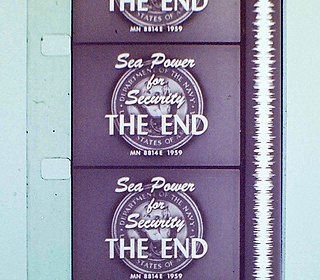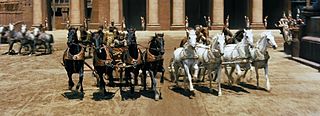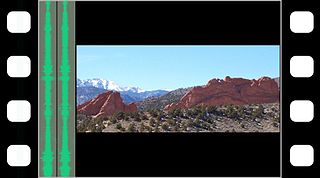| Year | Award | Category | Type | Title | Honorees |
|---|
| 2013 | Emmy Award | Outstanding Sound Mixing for a Comedy or Drama Series (One-Hour) | Nominated | Game of Thrones: And Now His Watch Is Ended | Mathew Waters, Onnalee Blank, Ronan Hill |
| 2013 | Emmy Award | Outstanding Sound Editing for a Series | Nominated | Game of Thrones: And Now His Watch Is Ended | Tim Kimmel, Paula Fairfield, Jed M. Dodge, Bradley C. Katona, David Klotz, Brett Voss, Jeffrey Wilhoit, James Moriana |
| 2013 | Emmy Award | Outstanding Sound Mixing for a Comedy or Drama Series (One-Hour) | Nominated | Mad Men: The Flood | Ken Teaney, Alec St. John, Peter Bentley |
| 2013 | Emmy Award | Outstanding Sound Editing for a Series | Nominated | Nikita: Aftermath | George Haddad, Ruth Adelman, Chad J. Hughes,
Steve Papagiannis, Dale Chaloukian, Ashley Revell,
James M. Bailey |
| 2013 | CAS Award | Sound Mixing - Television Series | Nominated | Game of Thrones: Blackwater | Onnalee Blank, Mathew Waters, Ronan Hill and Brett Voss |
| 2013 | CAS Award | Sound Mixing - Television Series | Nominated | Mad Men: Commissions and Fees | Ken Teaney, Alec St. John, Peter Bentley |
| 2012 | Emmy Award | Outstanding Sound Editing for a Series | Nominated | CSI: Miami: Blown Away | Timothy I. Kimmel, Brad Katona, Ruth Adelman, Todd Niesen, Skye Lewin, Joseph Sabella and James Bailey |
| 2012 | Emmy Award | Outstanding Sound Editing for a Series | Won | Game of Thrones: Blackwater | Peter Brown, Kira Roessler, Tim Hands, Paul Aulicino, Stephen P. Robinson, Vanessa Lapato,
Brett Voss, James Moriana, Jeffrey Wilhoit and David Klotz |
| 2012 | Emmy Award | Outstanding Sound Mixing for a Comedy or Drama Series (One-Hour) | Won | Game of Thrones: Blackwater | Mathew Waters, Onnalee Blank, Ronan Hill, Mervyn Moore |
| 2012 | Emmy Award | Outstanding Sound Mixing for a Comedy or Drama Series (Half-Hour) and Animation | Nominated | Entourage: The End | Tom Stasinis, Dennis Kirk, Todd Orr |
| 2011 | Emmy Award | Outstanding Sound Mixing for a Comedy or Drama Series (Half-Hour) and Animation | Won | Family Guy: Road to the North Pole | James F. Fitzpatrick and Patrick Clark |
| 2011 | Emmy Award | Outstanding Sound Mixing for a Comedy or Drama Series (One-Hour) | Nominated | Mad Men: The Suitcase | Ken Teaney, Todd Orr, Peter Bentley |
| 2011 | Emmy Award | Outstanding Sound Editing for a Series | Nominated | Nikita: Pandora | George Haddad, Dale Chaloukian, Ruth Adelman, Chad J. Hughes, Ashley Revell, James Bailey and Joseph T. Sabella |
| 2011 | Emmy Award | Outstanding Sound Editing for a Series | Nominated | CSI: NY: Life Sentence | Mark Relyea, Edmund Lachmann, David Barbee, Ruth Adelman, Kevin McCullough, Joshua Winget, Joseph T. Sabella and James M. Bailey |
| 2010 | Emmy Award | Outstanding Sound Mixing for a Miniseries or a Movie | Won | The Pacific: Part Two | Michael Minkler, Daniel Leahy, Andrew Ramage |
| 2010 | Emmy Award | Outstanding Sound Mixing for a Miniseries or a Movie | Nominated | The Pacific: Part Five | Michael Minkler, Daniel Leahy, Craig Mann, Andrew Ramage |
| 2010 | Emmy Award | Outstanding Sound Mixing for a Miniseries or a Movie | Nominated | 'The Pacific: Part Eight | Michael Minkler, Daniel Leahy, Marc Fishman, Gary Wilkins |
| 2010 | Emmy Award | Outstanding Sound Mixing for a Miniseries or a Movie | Nominated | The Pacific: Part Nine | Michael Minkler, Daniel Leahy, and Gary Wilkins |
| 2010 | Emmy Award | Outstanding Sound Mixing for a Comedy or Drama Series (Half-Hour) and Animation | Won | Entourage: One Car, Two Car, Red Car, Blue Car' | Tom Stasinis CAS, Dennis Kirk, Alec St. John and Todd Orr |
| 2010 | CAS Award | Sound Mixing - Television Series | Won | Mad Men: Guy Walks Into an Advertising Agency | Ken Teaney, Todd Orr, Peter Bentley |
| 2009 | Emmy Award | Outstanding Sound Mixing for a Comedy or Drama Series (Half-Hour) And Animation | Won | Entourage: Pie | Tom Stasinis CAS, Dennis Kirk and Bill Jackson |
| 2009 | Emmy Award | Outstanding Sound Editing for a Series | Nominated | CSI: Crime Scene Investigation: Mascara | Mace Matiosian, Ruth Adelman, Jivan Tahmizian, David Van Slyke, Joseph Sabella and James Bailey |
| 2008 | Emmy Award | Outstanding Sound Mixing for a Miniseries or a Movie | Won | John Adams: Don't Tread On Me | Marc Fishman and Tony Lamberti |
| 2008 | Emmy Award | Outstanding Sound Mixing for a Miniseries or a Movie | Nominated | John Adams: Join Or Die | Michael Minkler and Bob Beemer |
| 2008 | Emmy Award | Outstanding Sound Editing for a Series | Nominated | CSI: Crime Scene Investigation: Fight Night | Mace Matiosian, Ruth Adelman, Jivan Tahmizian, David Van Slyke, Chad Hughes, Joseph Sabella, Zane Bruce |
| 2008 | Emmy Award | Outstanding Sound Mixing for a Comedy or Drama Series (Half-Hour) and Animation | Nominated | Entourage: Adios Amigo | Dennis Kirk and Bill Jackson |
| 2007 | Emmy Award | Outstanding Sound Mixing for a Comedy or Drama Series (Half-Hour) And Animation | Won | Entourage: One Day In The Valley | Dennis Kirk and Mark Fleming |
| 2007 | Emmy Award | Outstanding Sound Mixing for a Comedy or Drama Series (One-Hour) | Won | CSI: Crime Scene Investigation: Living Doll | Yuri Reese and Bill Smith |
| 2007 | Emmy Award | Outstanding Sound Mixing for a Comedy or Drama Series (One-Hour) | Nominated | The Sopranos: Stage 5 | Kevin Burns and Todd Orr |
| 2007 | Emmy Award | Outstanding Sound Editing for a Series | Nominated | CSI: Miami: No Man's Land | Tim Kimmel, Ruth Adelman, Todd Niesen, Bradley C. Katona, Skye Lewin, Zane Bruce, Joseph Sabella |
| 2006 | Emmy Award | Outstanding Single-Camera Sound Mixing for a Series | Nominated | CSI: Crime Scene Investigation: A Bullet Runs Through It | Yuri Reese and Bill Smith |
| 2006 | Emmy Award | Outstanding Sound Editing for a Series | Nominated | CSI: Crime Scene Investigation: A Bullet Runs Through It: Part 1 | Mace Matiosian, Ruth Adelman, Mark Allen, Zane Bruce, Troy Hardy, Joseph Sabella, Jivan Tahmizian, David Van Slyke |
| 2005 | Emmy Award | Outstanding Sound Editing for a Miniseries, Movie or a Special | Won | The Life and Death of Peter Sellers | Anna MacKenzie, Victoria Brazier, Felicity Cottrell, Zack Davis, Richard Ford, Tim Hands, Laura Lovejoy, James Mather, Geoff Rubay, Ruth Sullivan |
| 2005 | Emmy Award | Outstanding Sound Editing for a Series | Nominated | CSI: Miami: Lost Son | Ruth Adelman, Zane Bruce, Ann Hadsell, Bradley C. Katona, Skye Lewin, Todd Nieson, Joseph Sabella |
| 2005 | Emmy Award | Outstanding Sound Editing for a Series | Nominated | CSI: Crime Scene Investigation: Down the Drain | Mace Matiosian, Ruth Adelman, Zane Bruce, Christine Luethje, Todd Nieson, Joseph Sabella, Jivan Tahmizian, David Van Slyke |
| 2005 | Emmy Award | Outstanding Single-Camera Sound Mixing for a Series | Nominated | CSI: Crime Scene Investigation: Down the Drain | Yuri Reese and Bill Smith |
| 2005 | Emmy Award | Outstanding Single-Camera Sound Mixing for a Miniseries or a Movie | Won | Warm Springs | Adam Jenkins and Rick Ash |
| 2005 | Emmy Award | Outstanding Single-Camera Sound Mixing for a Miniseries or a Movie | Nominated | The Life and Death of Peter Sellers | Adam Jenkins and Rick Ash |
| 2005 | Emmy Award | Outstanding Single-Camera Sound Mixing for a Miniseries or a Movie | Nominated | Lackawanna Blues | Adam Jenkins and Rick Ash |
| 2004 | Emmy Award | Outstanding Sound Editing for a Miniseries, Movie or a Special | Won | And Starring Pancho Villa as Himself | Tony Lamberti, Zack Davis, Lou Kleinman, Michael Lyle, Carey Milbradt, Allan K. Rosen, Geoffrey G. Rubay, Bruce Tanis, Karen Vassar, Nicholas Viterelli, Dave Williams, Joshua Winget |
| 2004 | Emmy Award | Outstanding Single-Camera Sound Mixing for a Series | Nominated | CSI: Crime Scene Investigation: Grissom vs. The Volcano | Yuri Reese and Bill Smith |
| 2004 | Emmy Award | Outstanding Single-Camera Sound Mixing for a Series | Nominated | The Sopranos: Irregular Around The Margins | Todd Orr and Kevin Burns |
| 2004 | Emmy Award | Outstanding Sound Mixing for a Miniseries or a Movie | Nominated | Traffic: Part 1 | Marc Fishman, Tony Lamberti, Kevin Burns |
| 2004 | Emmy Award | Outstanding Sound Mixing for a Miniseries or a Movie | Nominated | Something the Lord Made | Adam Jenkins and Rick Ash |
| 2003 | Emmy Award | Outstanding Sound Editing for a Series | Won | CSI: Crime Scene Investigation: Fight Night | Mace Matiosian, Ruth Adelman, Zane Bruce, Sheri Ozeki, Joseph Sabella, Jivan Tahmizian, David Van Slyke |
| 2003 | Emmy Award | Outstanding Single-Camera Sound Mixing for a Series | Nominated | CSI: Crime Scene Investigation: Revenge Is Best Served Cold" | Yuri Reese and Bill Smith |
| 2003 | Emmy Award | Outstanding Single-Camera Sound Mixing for a Series | Nominated | The Sopranos: Whoever Did This | Todd Orr and Kevin Burns |
| 2003 | Emmy Award | Outstanding Sound Mixing for a Miniseries or a Movie | Won | Live From Baghdad | Adam Jenkins, Rick Ash, Drew Webster |
| 2003 | Emmy Award | Outstanding Sound Mixing for a Miniseries or a Movie | Nominated | The Music Man | Todd Orr and Kevin Burns |
| 2003 | Emmy Award | Outstanding Sound Mixing for a Miniseries or a Movie | Nominated | A Painted House | Todd Orr and Kevin Burns |
| 2002 | Emmy Award | Outstanding Sound Editing for a Series | Nominated | CSI: Crime Scene Investigation: Chasing the Bus | Mace Matiosian, Ruth Adelman, Zane Bruce, Sheri Ozeki, Joe Sabella, Jivan Tahmizian, David Van Slyke |
| 2002 | Emmy Award | Outstanding Single-Camera Sound Mixing for a Series | Nominated | CSI: Crime Scene Investigation: Another Toothpick | Yuri Reese and Bill Smith |
| 2002 | Emmy Award | Outstanding Sound Mixing for a Miniseries or a Movie | Nominated | Band of Brothers: Carentan | Todd Orr and Kevin Burns |
| 2001 | Emmy Award | Outstanding Sound Editing for a Series | Nominated | CSI: Crime Scene Investigation: 35K OBO | Mace Matiosian, Ruth Adelman, Zane Bruce,
Stan Jones, Joe Sabella, Jivan Tahmizian,
David Van Slyke |
| 2001 | Emmy Award | Outstanding Single-Camera Sound Mixing for a Series | Nominated | The Sopranos: D-Girl | Todd Orr, Kevin Burns, Fred Tator |
| 2001 | Emmy Award | Outstanding Sound Mixing for a Miniseries or a Movie | Nominated | South Pacific | Rick Ash, Joe Earle, Joel Moss |
| 2001 | Emmy Award | Outstanding Sound Mixing for a Miniseries or a Movie | Nominated | Dirty Pictures | Todd Orr, Kevin Burns, Tom Perry |
| 2000 | Emmy Award | Outstanding Sound Editing for a Series | Nominated | The Others: Eyes | Mace Matiosian, Harry Cohen, Ruth Adelman, Mike Broomberg, Zane Bruce, Diane Griffen, Jivan Tahmizian and Guy Tsujimoto |
| 2000 | Emmy Award | Outstanding Sound Mixing for a Drama Series | Nominated | The Sopranos: D-Girl | Todd Orr, Kevin Burns, Tom Perry |
| 1999 | Emmy Award | Outstanding Sound Editing for a Series | Nominated | Buffy The Vampire Slayer: Lover's Walk | Anna MacKenzie, Mike Marchain, William Angarola, Fernand Bos, Zane Bruce, Mark Cleary, Robert Guastini, Rick Hinson, Cindy Rabideau, Joe Sabella and Ray Spiess, Jr. |
| 1999 | Emmy Award | Outstanding Sound Editing for a Series | Nominated | The Sopranos: I Dream Of Jeannie Cusamano | Anna MacKenzie, Mike Marchain, William Angarola, Benjamin Beardwood, Zane Bruce, Mark, Kathryn Dayak, Robert Guastini, Rick Hinson, Cindy Rabideau, Joe Sabella, Ray Spiess, Jr. and Bruce Swanson |
| 1999 | Emmy Award | Outstanding Sound Mixing for a Drama Series | Nominated | The Sopranos: A Hit Is A Hit | Todd Orr, Ron Evans, Adam Sawelson |
| 1999 | Emmy Award | Outstanding Sound Editing for a Miniseries, Movie or a Special | Nominated | A Soldier's Sweetheart | Anna MacKenzie, Mike Marchain, William Angarola, Ron Finn, Robert Guastini, Rick Hinson, Jason Lezama, Chris Moriana, Cindy Rabideau, Catherine Rose, Raymond Spiess III and Ray Spiess Jr. |
| 1999 | Emmy Award | Outstanding Sound Editing for a Miniseries, Movie or a Special | Nominated | Houdini | Anna MacKenzie, Mike Marchain, Skip Adams, William Angarola, Zane Bruce, Robert Guastini, Rick Hinson, Cindy Rabideau, Joe Sabella, Ray Spiess, Jr. and Jeanette Surga |
| 1998 | Emmy Award | Outstanding Sound Editing for a Series | Nominated | The Visitor: Pilot | Anna MacKenzie, William Angarola, Michael Broomberg, Mark J. Cleary, Robert Guastini, Rick Hinson, Jimmy Moriana, Cindy Rabideau, Jay Richardson, Raymond Spiess III, Ray Spiess Jr. |
| 1998 | Emmy Award | Outstanding Sound Mixing for a Miniseries or a Movie | Nominated | A Lesson Before Dying | Rich Ash and Gary Alexander |
| 1998 | Emmy Award | Outstanding Sound Editing for a Miniseries, Movie or a Special | Nominated | Creature | Anna MacKenzie, Mike Marchain, William Angarola, Steve Bissinger, Mark J. Cleary, Robert Guastini, Ellen Heuer, Rick Hinson, Jason Lezama, Aaron Martin, Craig Ng, Cindy Rabideau, Raymond Spiess III, Ray Spiess Jr. |
| 1998 | Emmy Award | Outstanding Sound Mixing for a Drama Miniseries or a Movie | Won | 12 Angry Men | Adam Jenkins and David E. Fluhr |
| 1998 | Emmy Award | Outstanding Sound Mixing for a Drama Miniseries or a Movie | Nominated | From The Earth To The Moon: Le Voyage Dans La Lune | Todd Orr and Kevin Burns |
| 1998 | Emmy Award | Outstanding Sound Mixing for a Drama Miniseries or a Movie | Nominated | From The Earth To The Moon: 1968 | Scott Millan and Brad Sherman |
| 1998 | Emmy Award | Outstanding Sound Mixing for a Drama Miniseries or a Movie | Nominated | From The Earth To The Moon: That's All There Is | Rich Ash and Adam Sawelson |
| 1997 | Emmy Award | Outstanding Sound Mixing for a Drama Miniseries or a Special | Won | Titanic | Adam Jenkins, Don Digirolamo, Davide E. Fluhr |
| 1997 | Emmy Award | Outstanding Sound Mixing for a Drama Miniseries or a Special | Nominated | Apollo 11 | Todd Orr, Kevin Burns, Jon Taylor |
| 1997 | Emmy Award | Outstanding Sound Mixing | Won | Flipper | Jon Taylor, Kevin Burns and Todd Orr |
| 1996 | Emmy Award | Outstanding Sound Mixing | Won | Flipper | Kevin Burns, Jon Taylor and Chris Minkler |
| 1993 | Emmy Award | Outstanding Sound Mixing for a Comedy Series or a Special | Won | Doogie Howser, M.D.: Doogie Got a Gun | Joe Kenworthy, Mike Getlin, Dean Okrand and Bill Thiederman |
| 1992 | Emmy Award | Outstanding Sound Mixing for a Comedy Series or a Special | Won | Doogie Howser, M.D.: Lonesome Doog | Joe Kenworthy, Bill Thiederman, Dean Okrand and Mike Getlin |
| 1992 | Emmy Award | Outstanding Sound Editing for a Series | Won | Law & Order: Heaven | David Hankins, Frank A. Fuller Jr., Peter Bergren, David A. Cohen, Richard Thomas, Barbara Issak, James Hebenstreit, Albert Edmund Lord III and Barbara Schechter |
| 1991 | Emmy Award | Outstanding Sound Mixing for a Comedy Series or a Special | Won | Doogie Howser, M.D.: Doogenstein | Joe Kenworthy, Dean Okrand, Bill Thiederman and Mike Getlin |
| 1987 | Emmy Award | Outstanding Sound Editing for a Miniseries or a Special | Won | Unnatural Causes | Vince Gutierrez, William H. Angarola, Clark Conrad, Doug Gray, Mace Matiosian,Anthony Mazzei, Michael J. Mitchell, Matt Sawelson, Edward F. Suski, Dan Carlin Sr., James Wolvington, Barbara Issak and Jon Johnson |
| 1987 | Emmy Award | Outstanding Sound Editing for a Series | Won | Max Headroom: Blipverts | Doug Grindstaff, Richard Corwin, Clark Conrad, Brad Sherman, Richard Taylor, James Wolvington and Dick Bernstein |
| 1985 | Emmy Award | Outstanding Live And Tape Sound Mixing And Sound Effects For A Series | Won | Cheers: The Executive's Executioner | Doug Gray, Michael Ballin, Thomas J. Huth and Sam Black |
| 1985 | Emmy Award | Outstanding Film Sound Mixing For A Limited Series Or A Special | Won | Space: Part 5 | Clark King, David J. Hudson, Mel Metcalfe and Terry Porter |
| 1985 | Emmy Award | Outstanding Film Sound Mixing For A Series | Won | Cagney & Lacey: Heat | Maury Harris, John Asman, Bill Nicholson and Ken S. Polk |
| 1984 | Emmy Award | Outstanding Live and Tape Sound Mixin and Sound Effects for a Series | Won | Real People: Hawaii Show - Sarah's Wedding | Mark Hanes, Stu Fox, Dean Okrand and Edward F. Suski |
| 1984 | Emmy Award | Outstanding Film Sound Mixing for a Limited Series or a Special | Won | A Streetcar Named Desire | Richard Raguse, William L. McCaughey, Mel Metcalfe and Terry Porter |
| 1983 | Emmy Award | Outstanding Film Sound Mixing for a Limited Series or a Special | Won | The Scarlet and the Black | John W. Mitchell, Gordon L. Day, Stan Wetzel and Howard Wilmarth |
| 1983 | Emmy Award | Outstanding Film Sound Editing for a Series | Won | Hill Street Blues: Stan the Man | Sam Horta, Donald W. Ernst, Avram D. Gold, Eileen Horta, Constance A. Kazmer and Gary Krivacek |
| 1982 | Emmy Award | Outstanding Film Sound Mixing | Won | Hill Street Blues: Personal Foul | Bill Marky, Robert W. Glass Jr., Bill Nicholson and Howard Wilmarth |
| 1980 | Emmy Award | Outstanding Film Sound Mixing | Won | The Ordeal of Dr. Mudd | Ray Barons, David E. Campbell, Robert Pettis and John T. Reitz |
| 1979 | Emmy Award | Outstanding Film Sound Editing | Won | Friendly Fire | Bill Wistrom |
| 1970 | Emmy Award | Outstanding Film Sound Mixing | Won | Mission: Impossible | Dominick Gaffey and Gordon L. Day |















